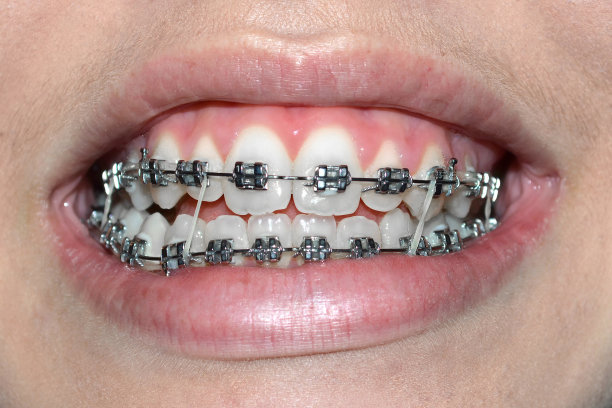The Journey of Extracting a Tooth A Comprehensive Guide to Dental Procedures and Aftercare Tips for a Smooth Recovery
Summary: Extracting a tooth can be an intimidating experience, but understanding the procedure and the aftercare involved can significantly ease anxiety and facilitate a smooth recovery. This comprehensive guide details the entire journey from the dental consultation through the extraction process itself, followed by essential aftercare tips and recovery advice. Whether you’re approaching this dental procedure with fear or simply seeking knowledge, this article aims to equip you with all the necessary information. With a focus on preparation, the extraction process, aftercare, and recognizing complications, readers will find reassurance and guidance for navigating their dental journey. By being informed and prepared, the process can become less daunting and lead to a quicker recovery.
1. Preparing for the Tooth Extraction

Preparation is the cornerstone of any successful dental procedure, including tooth extractions. Prior to your appointment, it is essential to consult with your dentist about your medical history and any medications you are currently taking. This ensures that the dentist is informed of any potential complications that may arise during the extraction process, such as bleeding disorders or allergic reactions to anesthesia.
Additionally, your dentist will likely perform a thorough examination of your mouth and may take X-rays to assess the positioning of the tooth and the root structure. This imaging is crucial, as it gives the dentist a clear picture of what to expect during the extraction and aids in planning the approach for a safe and efficient procedure.
On the day of your extraction, arrange for someone to accompany you to the dentist. Depending on the type of anesthesia used, you may be unable to drive yourself home afterward. Moreover, it’s advisable to follow any pre-operative instructions provided by your dentist, such as fasting before sedation, which can contribute to a smoother procedure and recovery.
2. Understanding the Extraction Process
The actual tooth extraction process begins with the administration of anesthesia to numb the area around the tooth. Depending on the complexity of the extraction, local anesthesia or sedation may be used. The dentist will then perform the extraction using specialized instruments to loosen and remove the tooth safely from its socket.
For straightforward extractions, the dentist will gently rock the tooth back and forth until it loosens and can be removed. However, in cases where the tooth is impacted or has extensive decay, surgical extraction may be necessary. This often involves making an incision in the gum and may require the removal of bone or cutting the tooth into smaller pieces to facilitate removal.
Regardless of the extraction type, the entire procedure usually takes less than an hour. Following the extraction, the dentist will apply gauze to the site to control bleeding and may provide post-operative instructions to ensure optimal healing.
3. Essential Aftercare Tips for Healing
After a tooth extraction, proper aftercare is vital to promote healing and prevent complications. First and foremost, it’s essential to follow your dentist’s post-operative instructions closely. Maintaining pressure on the gauze pad for the recommended time helps to form a blood clot, which is crucial for healing.
In the first 24 hours post-extraction, avoid rinsing your mouth vigorously, using straws, or engaging in strenuous physical activity, as these can dislodge the blood clot and lead to a painful condition known as dry socket. Instead, focus on resting and managing pain with prescribed medications or over-the-counter pain relievers as needed.
Gradually reintroduce soft foods into your diet, starting with options like yogurt, mashed potatoes, or smoothies. Stay hydrated, but be careful to avoid carbonated drinks and alcohol during the initial healing phase. Continuing good oral hygiene, while being gentle around the extraction site, will also facilitate a smooth recovery.
4. Recognizing Complications and When to Seek Help
While most people recover from tooth extractions without significant issues, it’s essential to be alert to potential complications. Signs of infections, such as increased swelling, prolonged pain, or fever, should prompt an immediate consultation with your dentist. Early detection and treatment are key to preventing further complications.
Additionally, if a dry socket occurs, you may experience severe pain a few days after the extraction. This happens when the blood clot fails to form or is dislodged, exposing the underlying bone and nerves. Should you suspect a dry socket, contact your dentist immediately for management options that can alleviate discomfort.
Lastly, keep an eye on persistent bleeding; some oozing is normal, but if bleeding does not subside after several hours, or if it resumes after it has stopped, seek dental assistance without delay. Being vigilant about your recovery can help ensure a positive experience following your tooth extraction.
Summary:
Tooth extraction might seem daunting, but being well-prepared, knowing what to expect during the procedure, implementing proper aftercare, and recognizing complications play a crucial role in the journey toward recovery. By taking the time to understand each step of the process, patients can alleviate anxiety and enhance their recovery experience.
This article is compiled by Vickong Dental and the content is for reference only.



